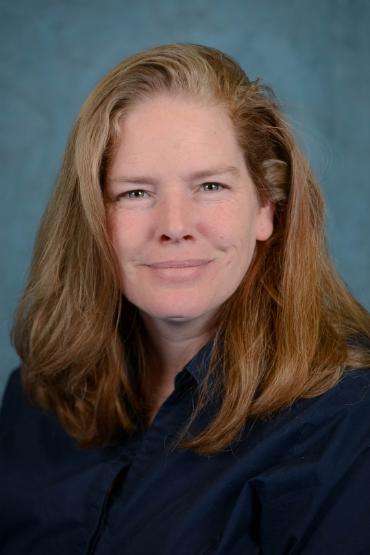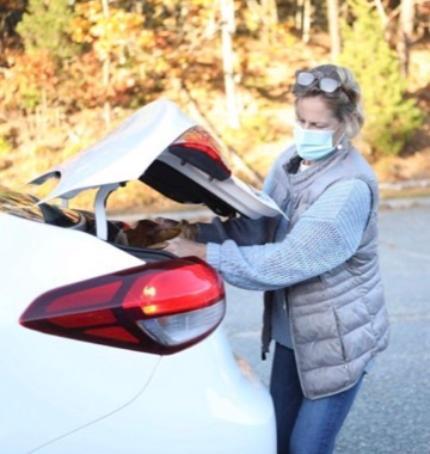4Cs’ Food Pantry and Food Insecurity Within and Beyond
by Alexandria Zine
Food insecurity on a national scale adds stress to students’ lives and the rate of graduation, but Cape Cod Community College (4Cs) is stepping up to take care of its students. Other two-year and four-year institutions are doing much of the same thing for students of every standing.
“The most recent surveys with community college students suggest that more than 30% of college students may face food insecurity.” said Maura Weir, Director of the 4Cs’ Student Wellness. “One survey found that two-thirds of community college students are food insecure, including about 14% who have experienced homelessness.” Weir is co-chair of the CALM Team, the campus lead for the JED foundation on mental health and substance abuse, and an adjunct faculty figure. She advocates that students who stress about where and when they will get their next meal, or where they will find shelter to sleep, naturally face challenges focusing on school tasks. “We at the Wellness Office strive to offer a food pantry pick-up service so students who are facing this concern can get their food picked up right on campus. If students need food, they can fill out the form online and Nancy McIver will call them to schedule a pick-up. It’s that easy!” explained Weir.

Maura Weir
4Cs’ pantry is located in the Life Fitness Center’s or the gymnasium’s room PE G13 on the lower level. Students looking to receive a meal package from the pantry must fill out the Campus Pantry Form online or in-person at the Student Wellness Office. Once that is completed, the student will receive a direct call to schedule a curbside pick-up. Following this, a Client Identification number will be given for the student to confirm their request as they arrive on campus during their reserved appointment. Students and staff are available to use this benefit once a week.
A sufficient, consistent quantity of affordable food is essential for all and many students and faculty to be able to provide for their families. The COVID-19 pandemic has narrowed the open embrace of students’ needs through the many manners or parts of life, such as changes in employment and household income. As a result, there have been many call-ins making their rightful way through to the food pantry. “Once COVID hit,” said Nancy McIver, the Student Wellness Center’s Office Assistant, “there was still a huge need to get food into the hands of students.” The vast rise in requests has led the Student Wellness Department to start a reservation policy of little face-to-face, close contact, which abides by the state’s COVID restrictions.

Nancy McIver helping at the 2020 4C's Turkey Feast To-Go
Food insecurities among students have had greater, longer strides, than is presently known by faculty and communities equally of many institutions and beyond, affecting particular demographics more than others. The Massachusetts Department of Higher Education has gathered numerous data results from research by The Hope Center for Community College and Justice as well as their own, surveying the numbers under “Student Hunger and Homelessness at MA Public Colleges.” According to the state’s information cache, separate from the aforementioned research center, from the cohort of “students experiencing basic needs insecurity in the Massachusetts Public Higher Education System, only about 36% [of students] use on-campus supports.” It has also been revealed, from a series of data collection initiatives in 2019, that “56% of students in the Massachusetts Public Higher Education System experienced at least one of these forms of basic needs insecurity in the past year.”
In a parallel pursuit, The Hope Center, which is centered at Temple University in Pennsylvania’s Philadelphia, there are other stark sides to this matter that have been enumerated for the public to digest. According to Executive Director and Ph.D. Christine Baker Smith’s “The Basic Needs Security Challenge in Higher Education,” not enough wherewithal is being held up by colleges as recently as December 11, 2020. For community colleges, a range between 42 and 56 percent of the student body is food insecure, while four-year institutions are within the 33 to 42% range. The range of housing insecurities among community college students is set slightly above that former range regarding food, at 46 to 60%. Into the depths of the nutritional disparities, 60% of Indigenous students are deprived of nourishment as well as 54% of African Americans, 47% of Hispanics, 38% of Southeast Asians, and 36% of Whites.
“I have had young students,” said Andrea Lyons-Marcotte, Professor of Information Technology at 4Cs, “that have come to class without eating all day because they did not have the means to get food. They want to get an education so that they are able to know they can go to the grocery store and buy food. Most do not let anyone know they don't have a means to eat three meals a day and so I wonder just how many students are in this category of food insecurities that we don't know about.” Over the course of thirteen years, Marcotte has observed and noted the barred supply of food for many, if not most, of her students.
Marcotte feels that too many students are unaware of the pantry at 4Cs, though the administration sends out a few emails about it. The location of the pantry is not convenient enough or it is unknown to students. She feels that if the pantry could be relocated to the center of campus, allowing students to pass by it each day, they would be more likely to reach out based on their need(s). Students are simply not able to go to the pantry. “Some students that do know about it don't understand that they have as much a right as anyone else on campus to use it and feel there are others that must be far worse.”

Andrea Lyons
The duration of the wait to access such a resource has its impact on students’ mental health with the consequences branching out within the student body. Within Smith’s research, a great percentage of students deal with severe anxiety and mental health at two-year institutions and four-year institutions. The juxtaposition of the two displays the enduring psychological results of food insecurity. According to “Students Experienced Anxiety,” 29% of students at a two-year institution face severe anxiety and 31% confront this same severity at four-year institutions.
Beyond the need to provide food to 4Cs students, a recent study “College Students Who Experience Food Insecurity Graduate At Half The Rate Of Their Peers,” by The Counter, an independent newspaper on unbalanced systems of food distribution, is about the impact that food insecurity has explicitly on students’ graduation level. According to staff writer Jessica Fu: “Public health researchers at Johns Hopkins University found that students who lacked consistent access to enough food were 43 percent less likely to graduate than their food-secure peers, and 61 percent less likely to get an advanced degree, like a master’s or doctorate, in the years that followed.”
“The reason I know there are students in my previous classes with food insecurities that would have never told me,” Said Marcotte, “was because a few years back I brought in a huge basket and would go down to the food pantry every Monday or Tuesday. At that time, they allowed me to fill the basket with food. I would choose healthy snacks only so that if someone was not able to afford lunch or dinner, they could at least have healthy snacks. The basket would be empty within a couple of days.” Marcotte’s experience includes many of her students continually confiding in her about their lack of food. Some students have admitted that her supply of snacks would be their only set of nutrients all day, or until dinner. The healthy options that Marcotte has offered display better focus in students and an end to frequent headaches from the lack of adequate food. One semester, Marcotte had encountered a student whose final week of each month wouldn’t include any amount of food.
Although there are these obstacles, Marcotte and others are creating subtle and effective ways to introduce the presence and supplies that the Family Pantry at 4Cs has to give to all. Other community colleges have an identical source of fuel and security for their learners. According to the Massachusetts Department of Higher Education, Bristol Community College has the Mobile Food Market for students, while Bunker Hill Community College has Single Stop. At Bridgewater State University, there is the Food Bank 4 U. There is the Student Resources at Framingham State University. UMass Dartmouth has Arnie’s Cupboard and there are many other schools with their own designated pantry. To read the complete list of schools and the corresponding pantry, visit the link https://www.mass.edu/strategic/studenthunger.asp. The items are listed at the bottom of the page under Campus Programs as two drop downs. The two are Community College Resources and State University Resources. Many schools have their own palate of compassion and sustainability, and each one strives to make it widely recognized by its students.
Marcotte thinks to gain this recognition, faculty and other members of the community can deliver food to students by bringing a basket-full of food to meetings and classes. “After almost 2 semesters of providing healthy snacks that helped them get through the class and the day,” said Marcotte, “the food pantry explained to me that they wanted students to come to the pantry for meal type shopping and not just what I was providing in healthy snacks. I completely understand their point of view, but everyone needs to get creative in order to reach out to help stop food insecurity. BHCC (Bunker Hill Community College) has begun delivering their food pantry options to student's doors. That is creative. Although 4Cs may not be able to do this, I do think there are many other additional options that would help.”
She has two propositions that could strengthen the pantry’s flow of visitors. She feels strongly about taking the pantry out of a “closet size room in the basement of the gym” to another central part of campus. “I think this would promote helping food insecurities more than anything else.” The second suggestion is the creation of an app for students to find more comfort in simply ordering a bag of grocery items through the icon and quickly showing their ID number during pick-up. There might be more of a comfort in that approach for students who feel they cannot and must not visit the pantry for any reason.
As of now, the pandemic has kept most students off of campus with the exception of a few classes. The lack of transportation and isolation of it has made the reach a little bit harder for the regular visitors of the pantry as well as its potential visitors. “Now that we are off campus,” said Marcotte, “I wonder how many students need food and are going without. It is a sad and scary thought.” An idea that Marcotte had is to send weekly reminders via email of food options, or advertise a couple specialty food items, to encourage students to pick up a bag. She believes a marketing campaign could also help, but with the student body changing often, she advises it be a permanent campaign. “I think that we need to look at our school food pantry differently than a town food pantry and try to make it comfortable, and easier access for students to use it.” Concluded Marcotte.
Olivia Ogonowsky contributed to this story.
Categories: Featured, Around Campus, Food, Student Life